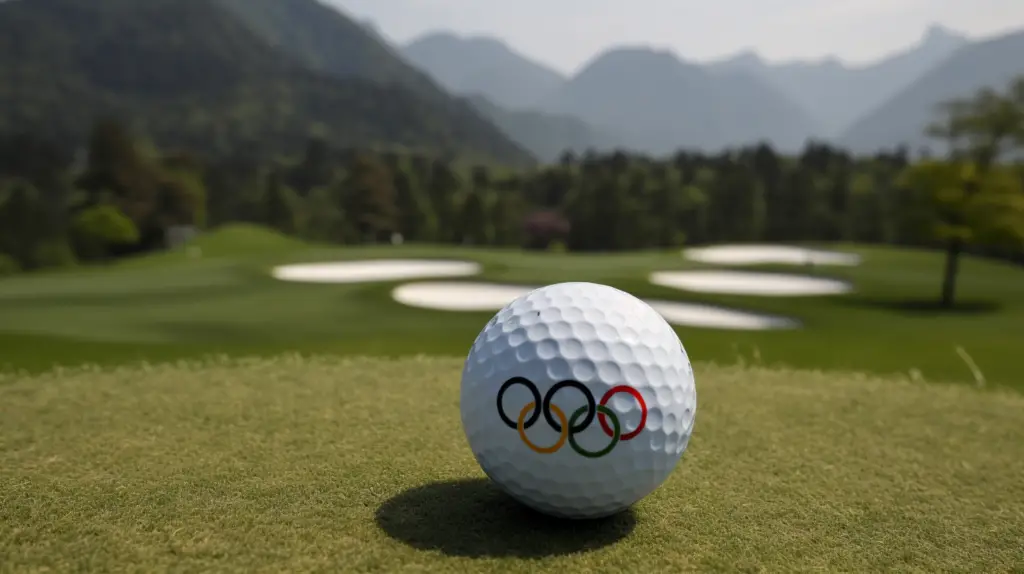Last Updated on November 20, 2023
Was golf added to the Olympics? For decades, the answer to this question remained elusive – until golf made its return at the 2016 Rio Games. After more than 100 years of absence from the Olympic stage, golf made its triumphant return at the 2016 Rio Games. But how did this happen? What was it like when golf returned to the world’s biggest sporting event after so many years away? What does this momentous occasion mean for the future of golfers hoping to reach Olympic heights? In this blog post, we’ll explore these questions and more as we take a look back at how golf was added to the Olympics.
Table of Contents:
- Golf’s Olympic Debut: A Brief History
- The Road to Rio: How Golf Became an Olympic Sport
- Golf’s Future in the Olympics: What Lies Ahead?
- Frequently Asked Questions
- Conclusion
Golf’s Olympic Debut: A Brief History
Golf has a long and winding road to its Olympic debut. Golf, originating in Scotland, has evolved to become a widely enjoyed pastime. Golf was first included as an official event at the 1900 Paris Olympics, but it wasn’t until 2016 that golf made its return to the Olympic program after 112 years.
The IGF oversees international golf competitions, such as those seen in The Open Championship or PGA Tour events, by organising and running them. The IGF was formed in 1958 by representatives from national golf organisations around the world, including Union des Golfs de France and the United States Golf Association (USGA). It is also responsible for determining which players will compete at each tournament, maintaining rankings of all players competing on both amateur and professional levels, setting rules governing play during tournaments, and ensuring fair play among competitors.
In order to be eligible for Olympic inclusion, athletes must meet criteria set by the IOC, such as having a ranking within their country’s top 15 according to OWGR and demonstrating successful results at major tournaments over a two-year period. These include having a ranking within their respective country’s top 15 according to Official World Golf Ranking (OWGR), demonstrating successful results at major tournaments such as PGA Tour or European Tour events over a two-year period prior to qualification, being part of a Professional Golfer’s Association or Amateur Golfer’s Association memberships when applicable, and meeting age requirements specified by IOC guidelines. This ensures only experienced players are able to compete on this level and reach the highest peak of success.
The Road to Rio: How Golf Became an Olympic Sport

Golf’s return to the Olympic Games in 2016 marked a historic moment for the sport after 112 years away from the world’s biggest stage. After years of lobbying by golf’s governing bodies and the IOC, the sport made its triumphant return to the Olympic Games in 2016, ending a 112-year absence from the world’s biggest stage.
At the 2004 meeting, representatives from the USGA, PGA Tour and The Royal and Ancient Golf Club of St Andrews presented their proposal to IOC President Jacques Rogge. They put forth that two individual tournaments – one for men and another for women – should be included in every Summer Olympics going forward. After a long road of lobbying by golf’s governing bodies and the IOC, golf was finally able to make its way back onto the world’s biggest stage after 112 years away.
In 2005, these proposals were presented to members of the IOC, who voted overwhelmingly in favour of adding golf back onto its programme. This decision was largely driven by the growing public interest in the sport; since 2000, there had been a surge in popularity thanks to increased television coverage, improved technology and better access to courses around the world. It also helped that some of golf’s top players, such as Tiger Woods, were household names whose presence would help draw attention from viewers all over the globe.
In order to guarantee parity during the competition, criteria for qualification had to be developed so only eligible players could vie for Olympic gold at Rio 2016. To make this happen, an Official World Golf Ranking system was created, which determined who would qualify based on how many athletes each country sent overall and their ranking points.
Golf’s Future in the Olympics: What Lies Ahead?

Golf’s inclusion in the 2016 Rio Games was a significant event, signifying its place in Olympic history. With golf now firmly established as an Olympic event, what lies ahead for its future?
The IGF has set forth lofty ambitions with the aim of advancing golf around the world and making it accessible to everyone, regardless of age or background. The IGF is aspiring to make golf more available to people of all ages and backgrounds by exhibiting the game on a broad scale, with the hope of motivating additional individuals to partake in it and generating fresh possibilities for expansion within the sport.
To ensure that the courses remain accessible after the Olympics, they have made them open to public use. This means that anyone can come out and play at these historic venues – a great way to get people interested in golf. Additionally, many countries around the world have invested heavily into developing their own national teams for Olympic competition, which could lead to increased interest from local communities who want to support their team’s success.
In addition, there is hope that greater exposure through television coverage of events like The Masters or Ryder Cup will help bring more attention – and potentially sponsorships – towards professional players from smaller countries or regions where golf may not be as popular yet. This could also provide additional incentives for young aspiring professionals who might otherwise struggle with funding their career ambitions without corporate backing.
Overall, while much still remains uncertain about how successful golf will be as an Olympic event moving forward, one thing is certain: this latest chapter in its history presents exciting opportunities both on-and-off course. With some luck (and perhaps a few birdies along the way), we should see even greater participation across different levels of competitive play worldwide, something every golfer can look forward to.
Frequently Asked Questions
When did golf get added to the Olympics?
Golf was officially added to the Olympic program in 2016 after a 112-year absence. The IOC, in 2009, had a unanimous decision to reintroduce golf as an Olympic sport for the 2016 and 2023 Summer Games after it was absent from competition for over one hundred years. Prior to this, golf had been included in two previous editions of the Games: the 1900 Paris Olympics and the 1904 St Louis Olympics. Since its reintroduction, golf has been embraced by athletes from all corners of the world, becoming one of the most beloved sports in the Olympic Games.
Will golf be in the 2024 Olympics?
Yes, golf will be in the 2024 Olympics. The IOC voted to reinstate golf as an Olympic sport after a 120-year hiatus, recognising its widespread appeal and increasing popularity. This decision was made due to its global appeal and increased popularity among younger generations of athletes. Golfers worldwide can now take part in the pinnacle of their sport, and viewers will be enthralled by this fresh addition to the Olympics.
Will golf ever be in the Olympics?
At present, golf does not seem to be a part of the Olympic program. The IOC has, for some time, deliberated over the possibility of including golf in the Olympic lineup; however, no resolution has been finalised. Before a decision to add golf to the Olympics can be made, many aspects must be taken into account, such as costs and organising tournaments on an international scale. Additionally, many other sports are vying for inclusion as well, so there is much competition within this arena. Given the various factors that must be addressed and resolved, it appears improbable that golf will soon become an Olympic sport.
Conclusion
Golf has evolved significantly since its inaugural appearance in the Olympic Games of 1900. With golf now part of the Rio Olympics, it is evident that this beloved sport will remain a vital component of international sporting events for many years to come. With golf’s Olympic inclusion in Rio, it is clear that this popular sport will remain a major part of international competition for years to come. As we look ahead and ask ourselves, ‘was golf added to the olympics?’, there’s no doubt that future generations will have plenty more opportunities to witness some incredible feats on the course as they strive for gold medals at major events around the world.



